




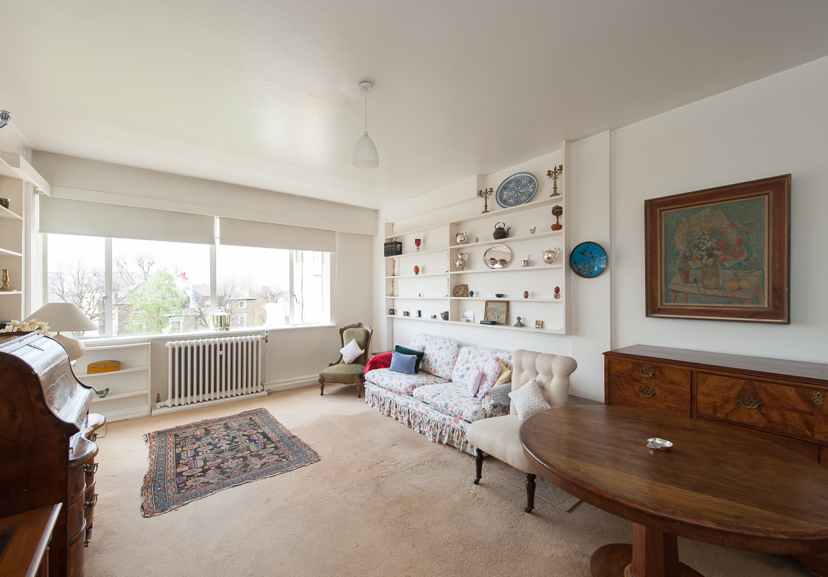
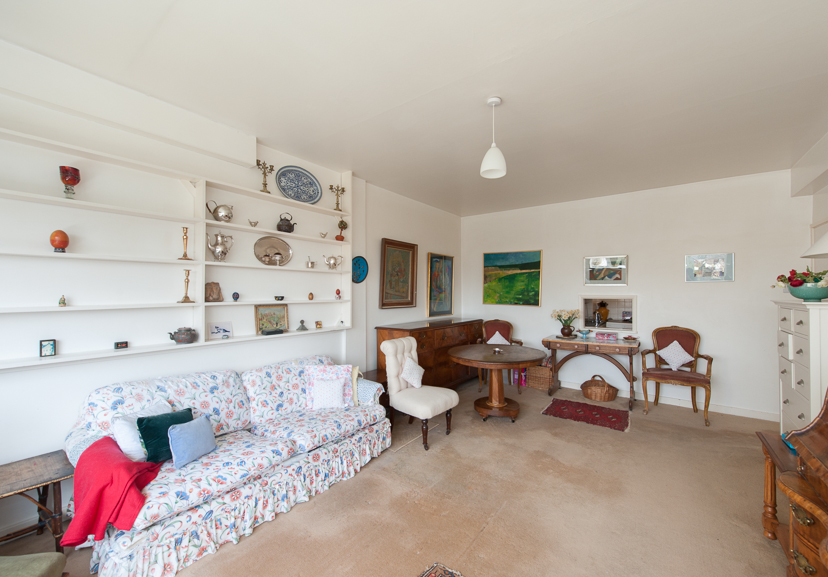
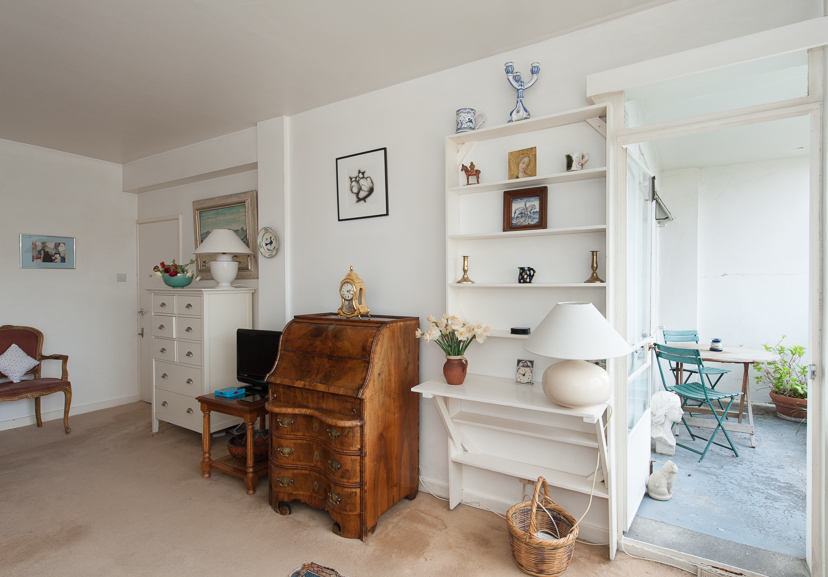
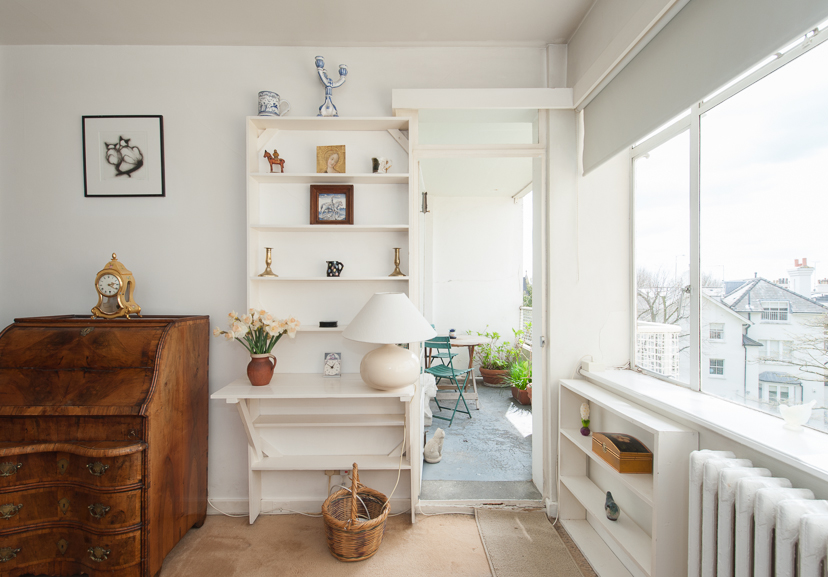
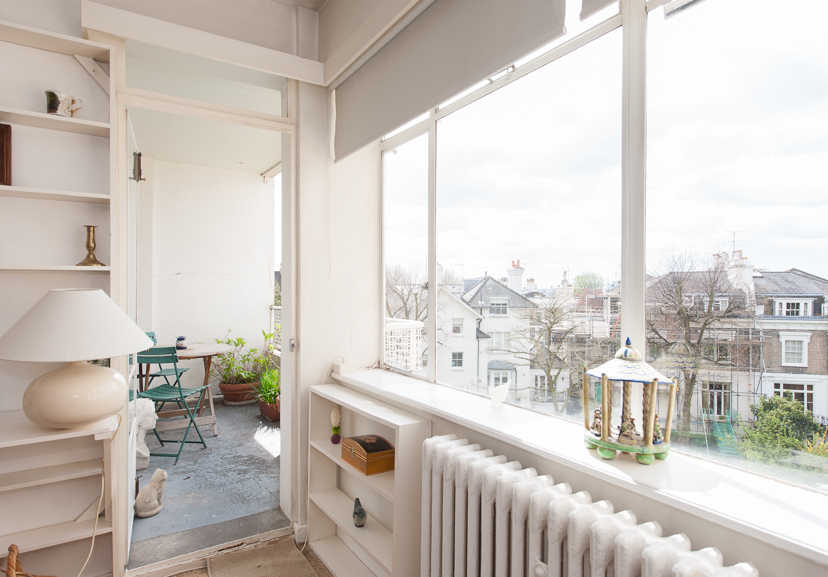
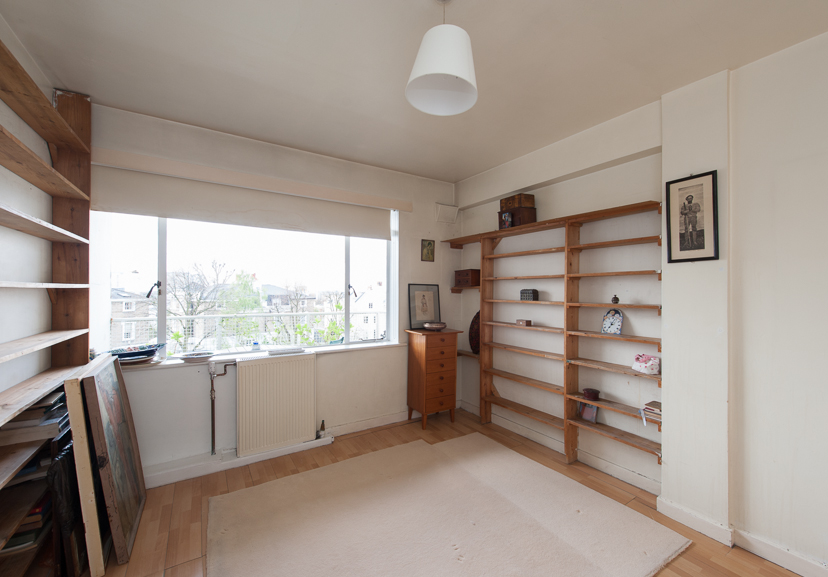
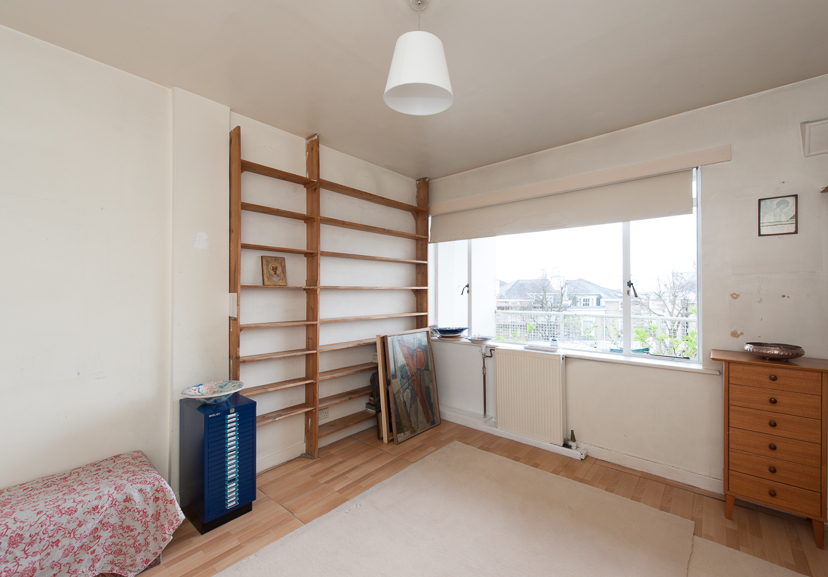
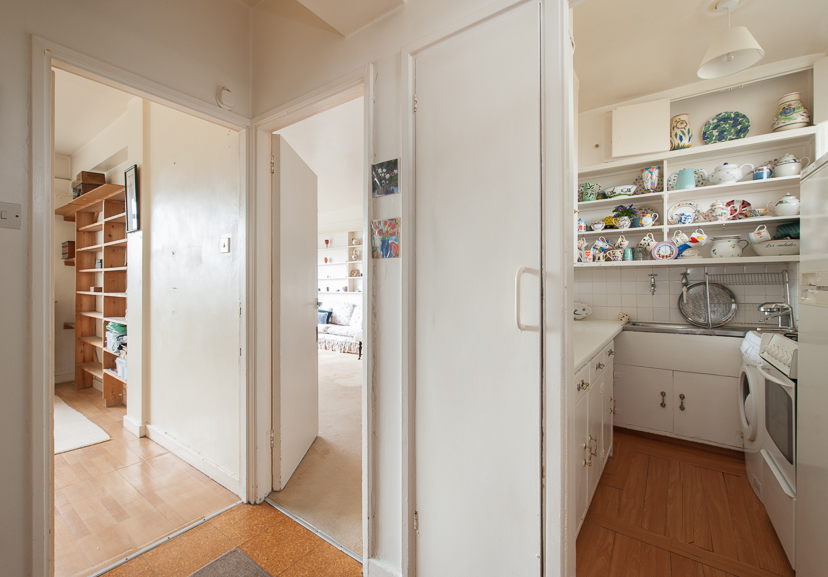
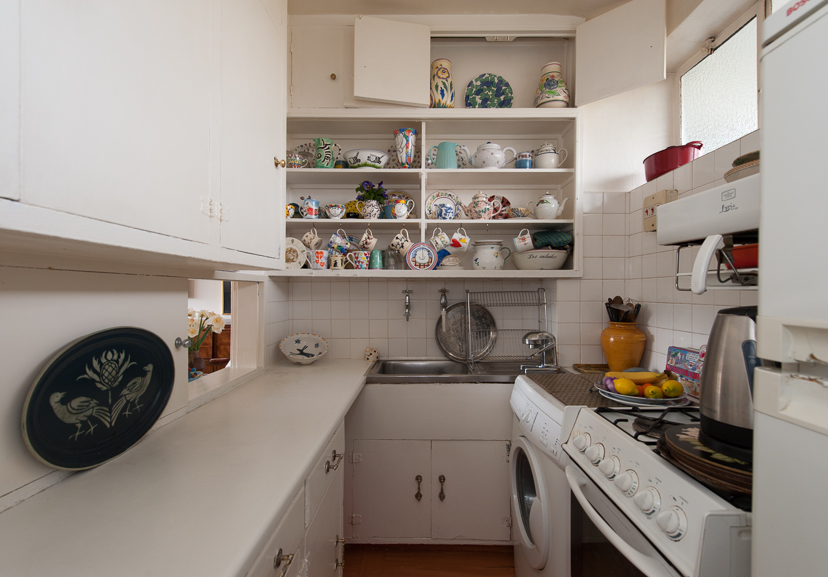
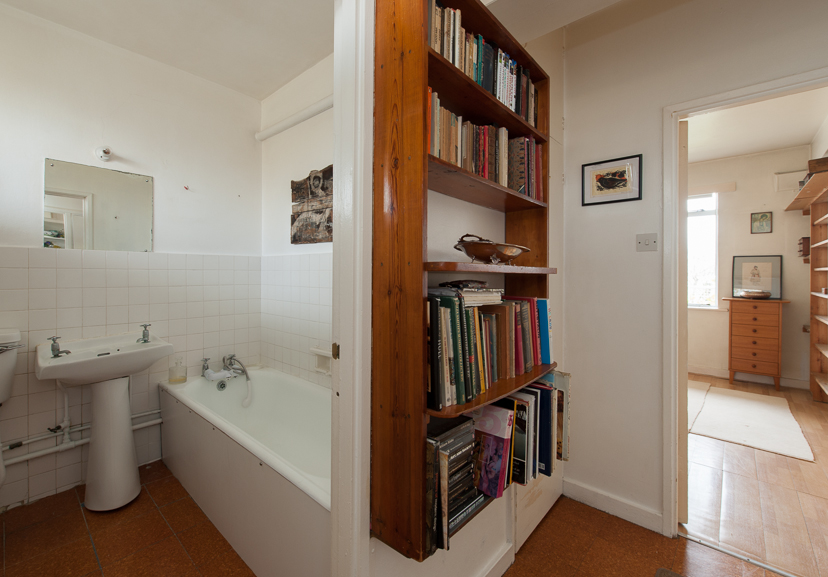
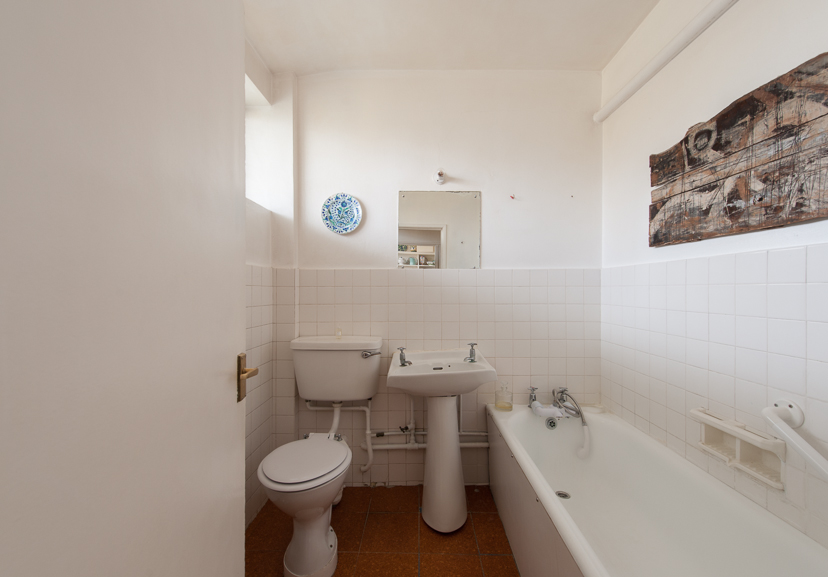


Ladbroke Grove III
London W11
Architect: Edwin Maxwell Fry
Register for similar homesA rare opportunity to purchase a wonderfully bright one-bedroom apartment with balcony on the third floor of this landmark 1930s block in Notting Hill. Number 65 Ladbroke Grove was designed by the great British architect Edwin Maxwell Fry in collaboration with Walter Gropius, the founder of the Bauhaus. It is one of the finest surviving Modernist buildings in London, and is Grade II-listed.
The apartment measures approximately 549 sq ft internally, and includes a reception room with access to a balcony with south-westerly aspect, kitchen, bathroom and double bedroom. The reception room, bedroom and balcony all have beautiful views over trees and gardens towards the period houses on Lansdowne Crescent. The kitchen is in largely original condition.
The building has a live-in porter, lift access and glorious communal gardens. There are three residents’ parking bays for use on a first-come first-served basis. The block contains just 17 flats, which come up for sale very rarely; this particular apartment has been in the same ownership for many years.
Built on the highest point of Ladbroke Grove, number 65 occupies one of the most enviable sites in London. It is situated within easy reach of the shops, restaurants and markets of Portobello Road, Holland Park Avenue and Westbourne Grove. The Underground stations of Holland Park (Central Line), Notting Hill Gate (Central, Circle and District Lines) and Ladbroke Grove (Hammersmith & City Line) are all close at hand. There is also good road access to the M4, A4 and A40.
Tenure: Leasehold
Lease: approximately 56 years remaining
Service charge: approximately £6,000 per annum (including sinking fund, heating and hot water)
Please note that all areas, measurements and distances given in these particulars are approximate and rounded. The text, photographs and floor plans are for general guidance only. The Modern House has not tested any services, appliances or specific fittings — prospective purchasers are advised to inspect the property themselves. All fixtures, fittings and furniture not specifically itemised within these particulars are deemed removable by the vendor.




History
Examining the trade journals published soon after the completion of 65 Ladbroke Grove, it is clear that most viewed the building as a thoroughly progressive and welcome addition to the London skyline. A 1938 article in Building, for instance, gave the following glowing assessment: “Its light construction and elegant detail [provide] a diametric contrast to more heavily designed neighbours. In effect, however, and owing to the excellent proportions of the newcomer, this contrast is not so much startling as extremely refreshing.”
The Architects’ Journal from 29 December 1938 records the use of external materials: “Flint bricks, steel casement windows, tubular steel and wire mesh handrails. Wall adjoining gallery is of pale blue tiles and roof balustrade is of wired glass.”
A recent book describes the combination of materials at 65 Ladbroke Grove as “very well handled”. Furthermore, it portrays the building as a perfectly executed example of the Corbusian ideal: “The flats follow the same programme as Lawn Road [Wells Coates’s Isokon apartments] but with more architectural ability: the well-serviced anonymity of Le Corbusier’s machine à habiter.”
Maxwell Fry was one of the few prominent Modernist architects working in Britain during the 1930s who was actually British – most had emigrated from Continental Europe, where the Modern Movement originated. Among his most famous projects are Impington Village College in Cambridgeshire, Miramonte in Kingston-upon-Thames, and the Sun House in Hampstead. He also collaborated with Le Corbusier in Chandigarh. Number 65 Ladbroke Grove was designed when Fry was in practice with Walter Gropius, the founder of the famous Bauhaus School and one of the pioneers of Modern architecture.





